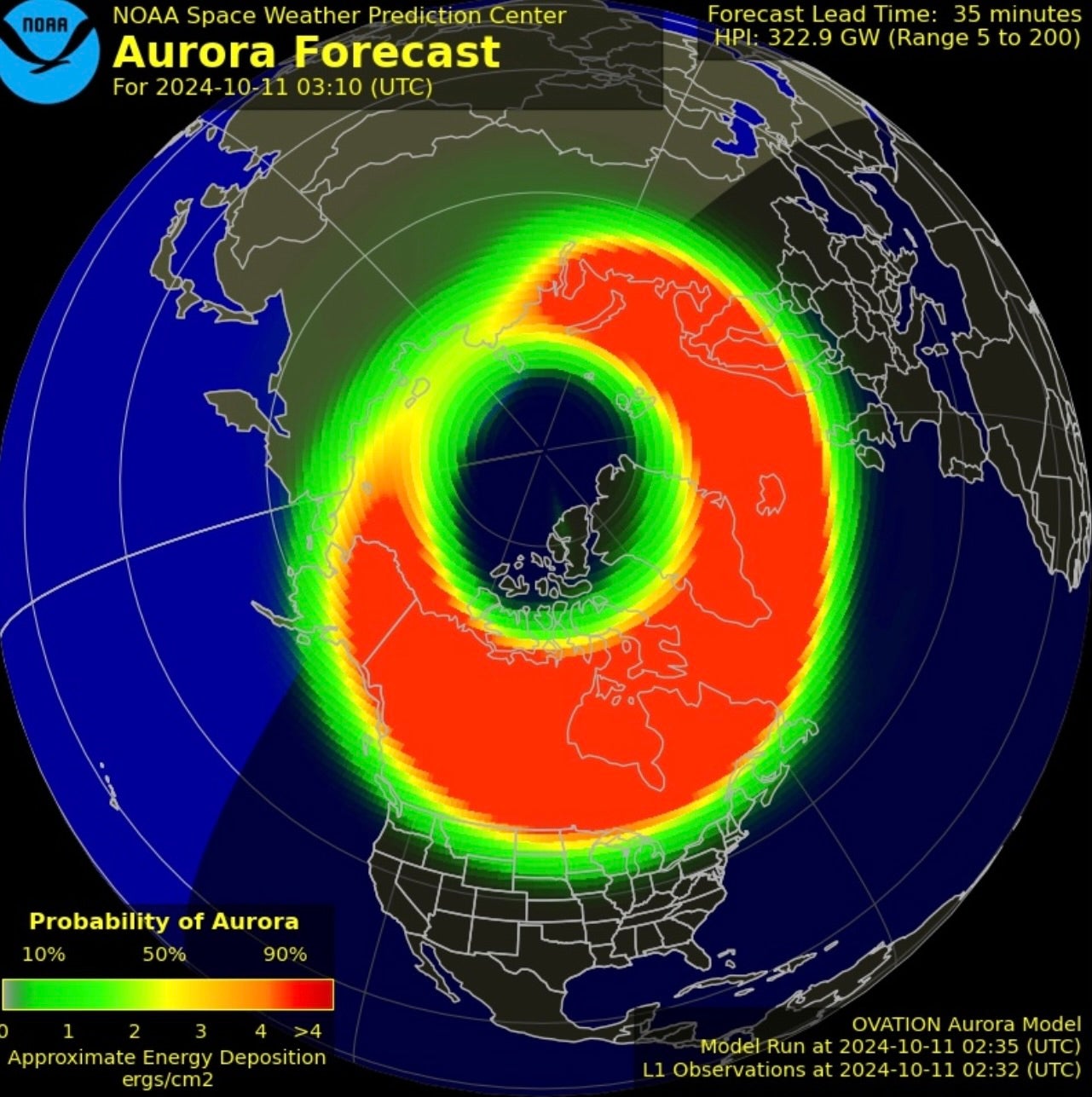Will NYC be able to see the northern lights again tonight?
The aurora borealis was seen as far as Washington DC on Thursday
Your support helps us to tell the story
From reproductive rights to climate change to Big Tech, The Independent is on the ground when the story is developing. Whether it's investigating the financials of Elon Musk's pro-Trump PAC or producing our latest documentary, 'The A Word', which shines a light on the American women fighting for reproductive rights, we know how important it is to parse out the facts from the messaging.
At such a critical moment in US history, we need reporters on the ground. Your donation allows us to keep sending journalists to speak to both sides of the story.
The Independent is trusted by Americans across the entire political spectrum. And unlike many other quality news outlets, we choose not to lock Americans out of our reporting and analysis with paywalls. We believe quality journalism should be available to everyone, paid for by those who can afford it.
Your support makes all the difference.New York City residents were treated to a spectacular display as the northern lights bopped across the sky on Thursday evening.
Celestial hues of green, blue, pink and purple were seen as far as Boston, Washington DC and parts of the Southeast. While many cities have high light pollution that makes it difficult to see the auroras, it is possible to view them from a flat area that has a view of the horizon, with the best viewing times set to be between 10pm and 2am. The aurora can be seen from as much as 1000 km away when it is bright and the conditions are clear.
But will there be another opportunity to see the lights from New York City on Friday?
According to the National Oceanic and Atmospheric Administration Space Weather Prediction Center, there is a slight chance as G1 and G2 conditions are still feasible, meaning that the event could be seen from high altitudes and as low as New York and Idaho. The G1 conditions could impact migratory animals, weaken power grid fluctuations, and cause minor impacts on satellites.

G2 conditions could damage transformers with long duration storms, affect orbit predictions and require corrective actions to spacecraft orientation.
Still, a spokesperson told The Independent that the cause of the aurora is waning and the event is weakening. The event is caused by disturbances in the Earth’s magnetosphere that triggers a coronal mass ejection from the sun. As solar wind increases in speed and the interplanetary magnetic field embedded in the solar wind turns southward, the geomagnetic activity will increase and the aurora will become bright, the agency’s website states.
If skywatchers are unable to catch a glimpse of the aurora, other light shows are available to view this month. There is supermoon on October 16 and the Orionids meteor shower around October 20 and 21.
Join our commenting forum
Join thought-provoking conversations, follow other Independent readers and see their replies
Comments